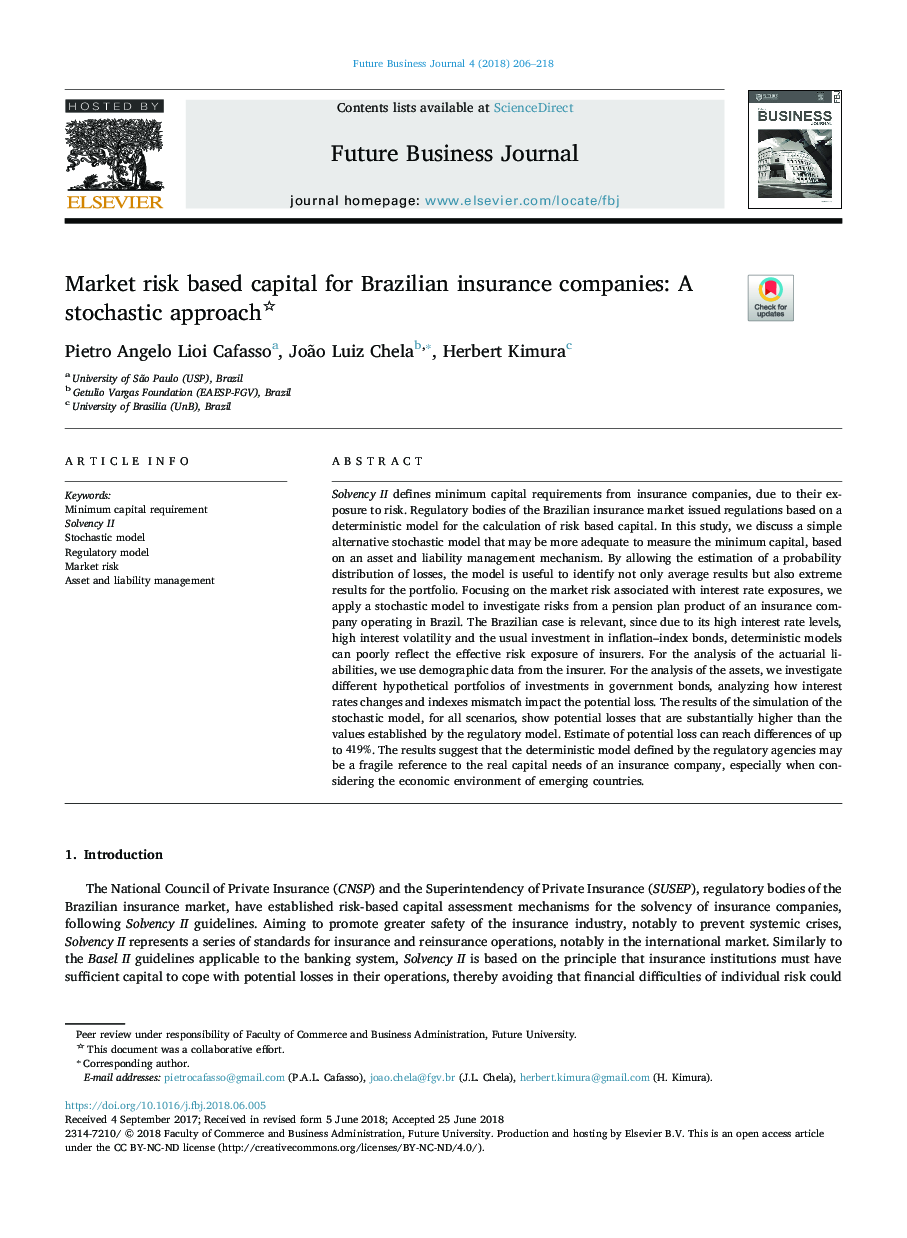| Article ID | Journal | Published Year | Pages | File Type |
|---|---|---|---|---|
| 7428842 | Future Business Journal | 2018 | 13 Pages |
Abstract
Solvency II defines minimum capital requirements from insurance companies, due to their exposure to risk. Regulatory bodies of the Brazilian insurance market issued regulations based on a deterministic model for the calculation of risk based capital. In this study, we discuss a simple alternative stochastic model that may be more adequate to measure the minimum capital, based on an asset and liability management mechanism. By allowing the estimation of a probability distribution of losses, the model is useful to identify not only average results but also extreme results for the portfolio. Focusing on the market risk associated with interest rate exposures, we apply a stochastic model to investigate risks from a pension plan product of an insurance company operating in Brazil. The Brazilian case is relevant, since due to its high interest rate levels, high interest volatility and the usual investment in inflation-index bonds, deterministic models can poorly reflect the effective risk exposure of insurers. For the analysis of the actuarial liabilities, we use demographic data from the insurer. For the analysis of the assets, we investigate different hypothetical portfolios of investments in government bonds, analyzing how interest rates changes and indexes mismatch impact the potential loss. The results of the simulation of the stochastic model, for all scenarios, show potential losses that are substantially higher than the values established by the regulatory model. Estimate of potential loss can reach differences of up to 419%. The results suggest that the deterministic model defined by the regulatory agencies may be a fragile reference to the real capital needs of an insurance company, especially when considering the economic environment of emerging countries.
Related Topics
Social Sciences and Humanities
Business, Management and Accounting
Management Information Systems
Authors
Pietro Angelo Lioi Cafasso, João Luiz Chela, Herbert Kimura,
